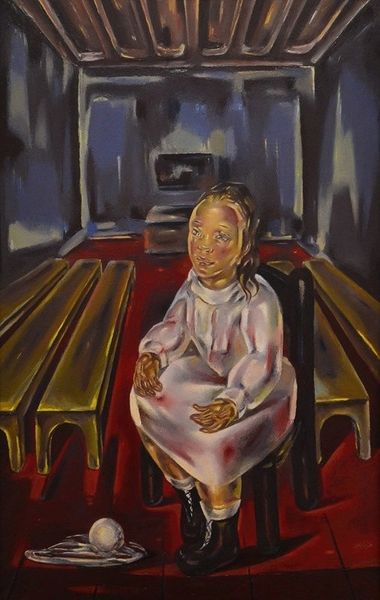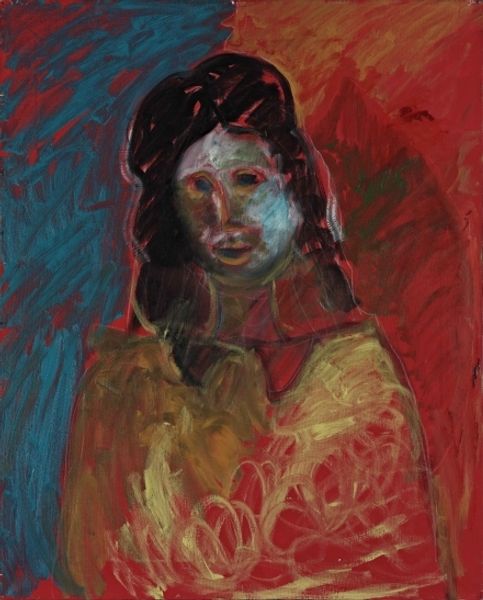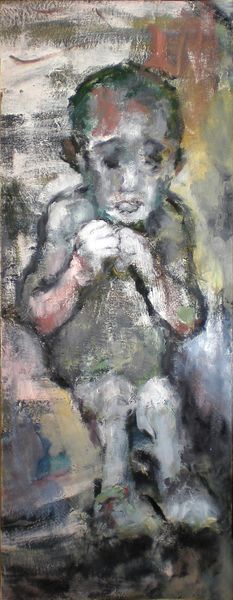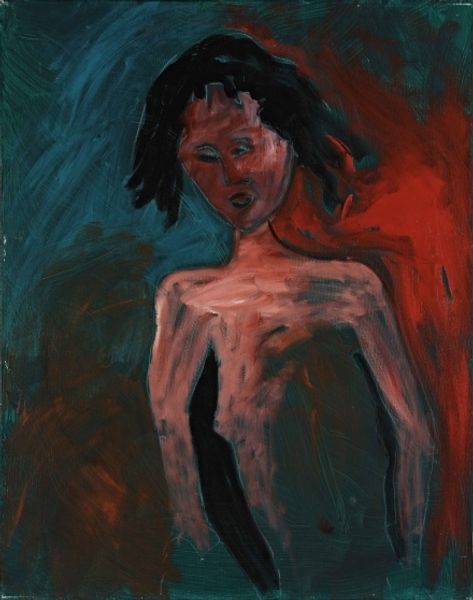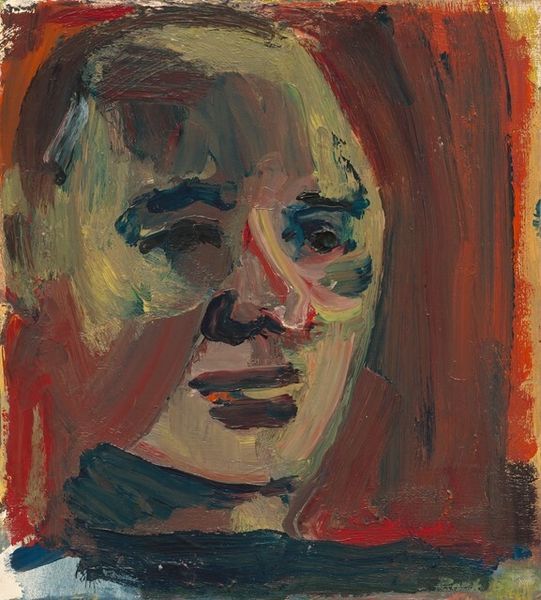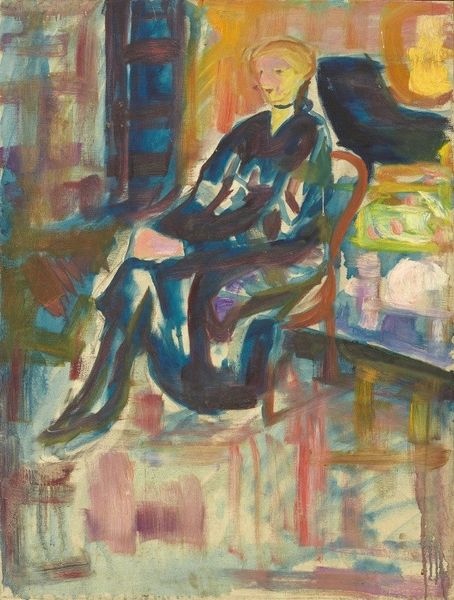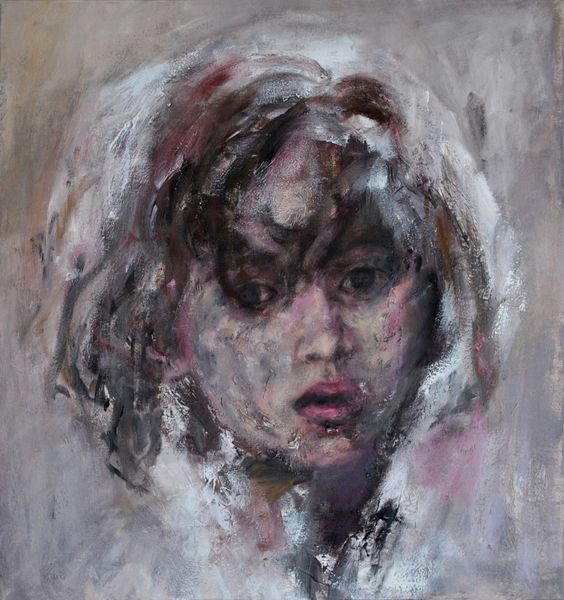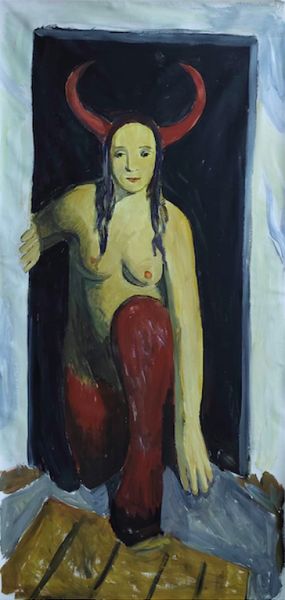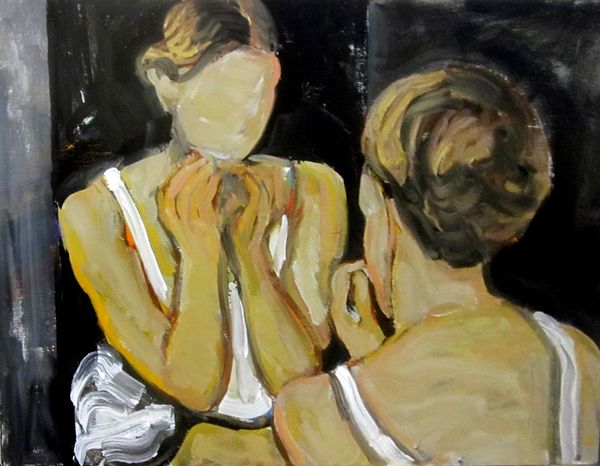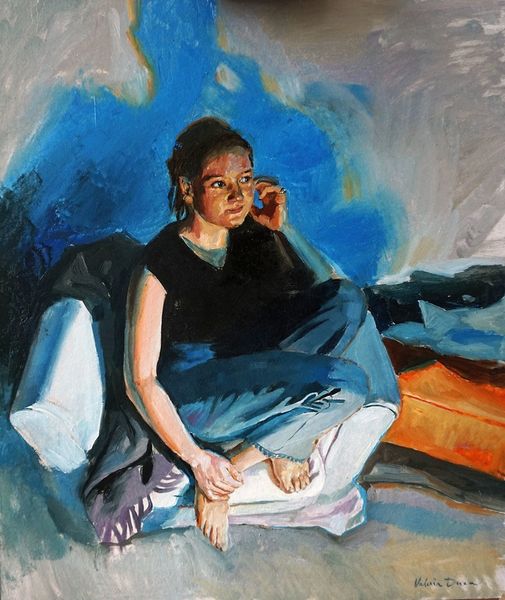
painting, oil-paint
#
portrait
#
painting
#
impressionism
#
oil-paint
#
figuration
#
oil painting
#
intimism
#
portrait art
#
expressionist
Copyright: Public Domain: Artvee
Editor: This oil painting, "Jeune Assis À Table Face À Une Tasse" by María Blanchard, gives me such a melancholic feeling. There is an intriguing blurriness, as though it's a faded memory. What symbols or meanings do you see in it? Curator: It’s a fascinating question, considering Blanchard's own tumultuous life. Notice the pose – the clasped hands, the slightly downturned gaze. Throughout history, hands have signified labour, connection, even prayer, but here, they seem almost burdened. The cup itself is central. Do you know the traditional meaning associated with cups? Editor: Is it like the holy grail from the legends, representing quests or desires? Curator: In many traditions, a cup, or chalice, symbolizes receptivity and emotional capacity. But consider the blurred edges, the muted colors – is the cup being filled or is it draining? Are we looking at potential or a sense of loss? The overall haziness can evoke a psychological space; the artist paints, perhaps, the solitude and complexities that lie just beneath the surface. Blanchard faced physical disabilities and social isolation. Knowing that, what emotions might be visually communicated here? Editor: I guess she could have poured her own experiences into that blurry form and its elements of intimacy... Curator: Exactly! It can reflect her inner landscape and transform the still life and portrait into a meditation of interiority and individual struggles. Symbolism, you see, works hand-in-hand with lived experiences and collective understandings. Editor: Thank you. I’ve really gained a deeper perspective of both Blanchard’s work and the use of symbolism within art. Curator: And I, a refreshing reminder to view art through the lens of both shared cultural memory and individual emotional experience.
Comments
No comments
Be the first to comment and join the conversation on the ultimate creative platform.

